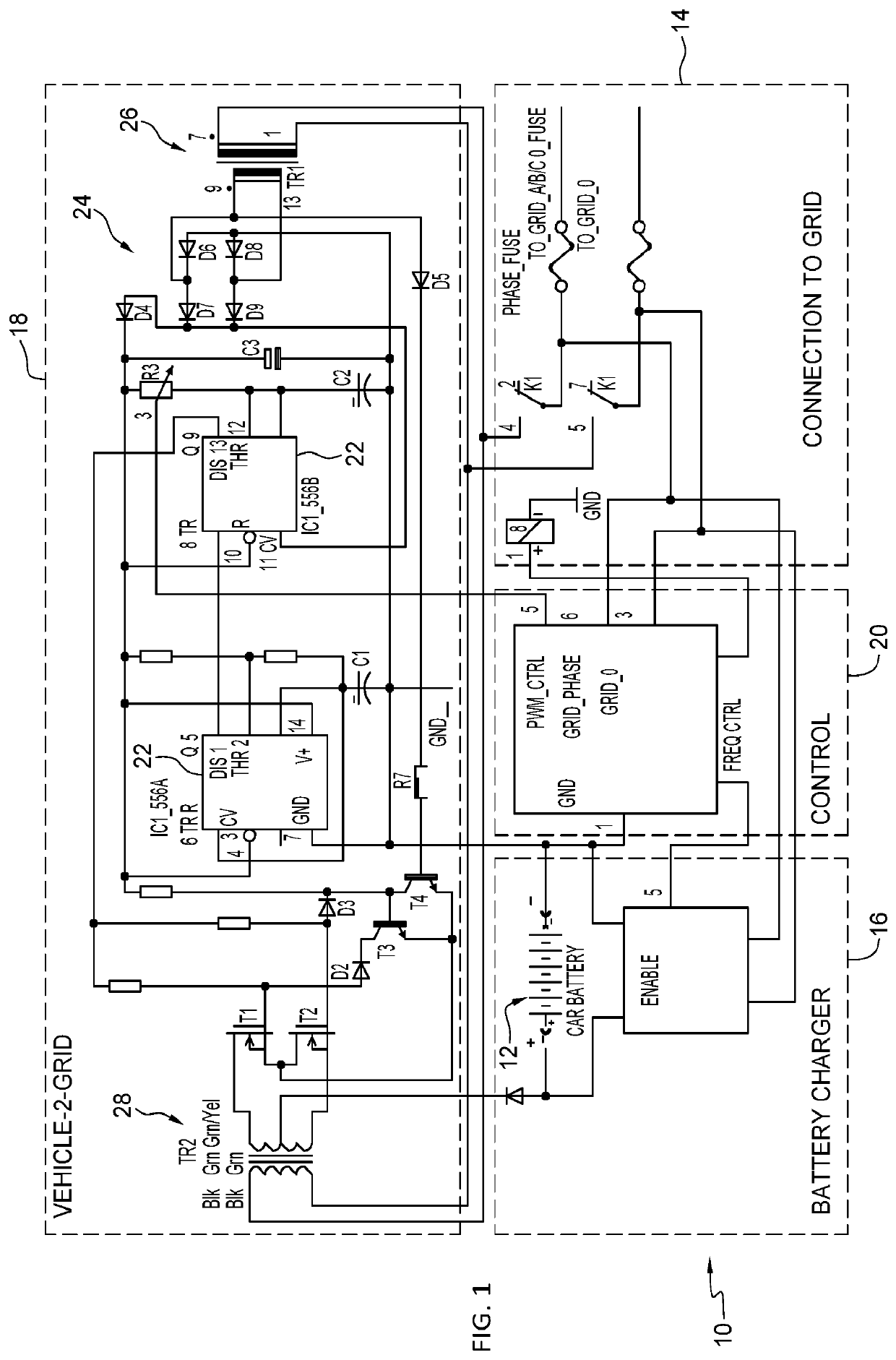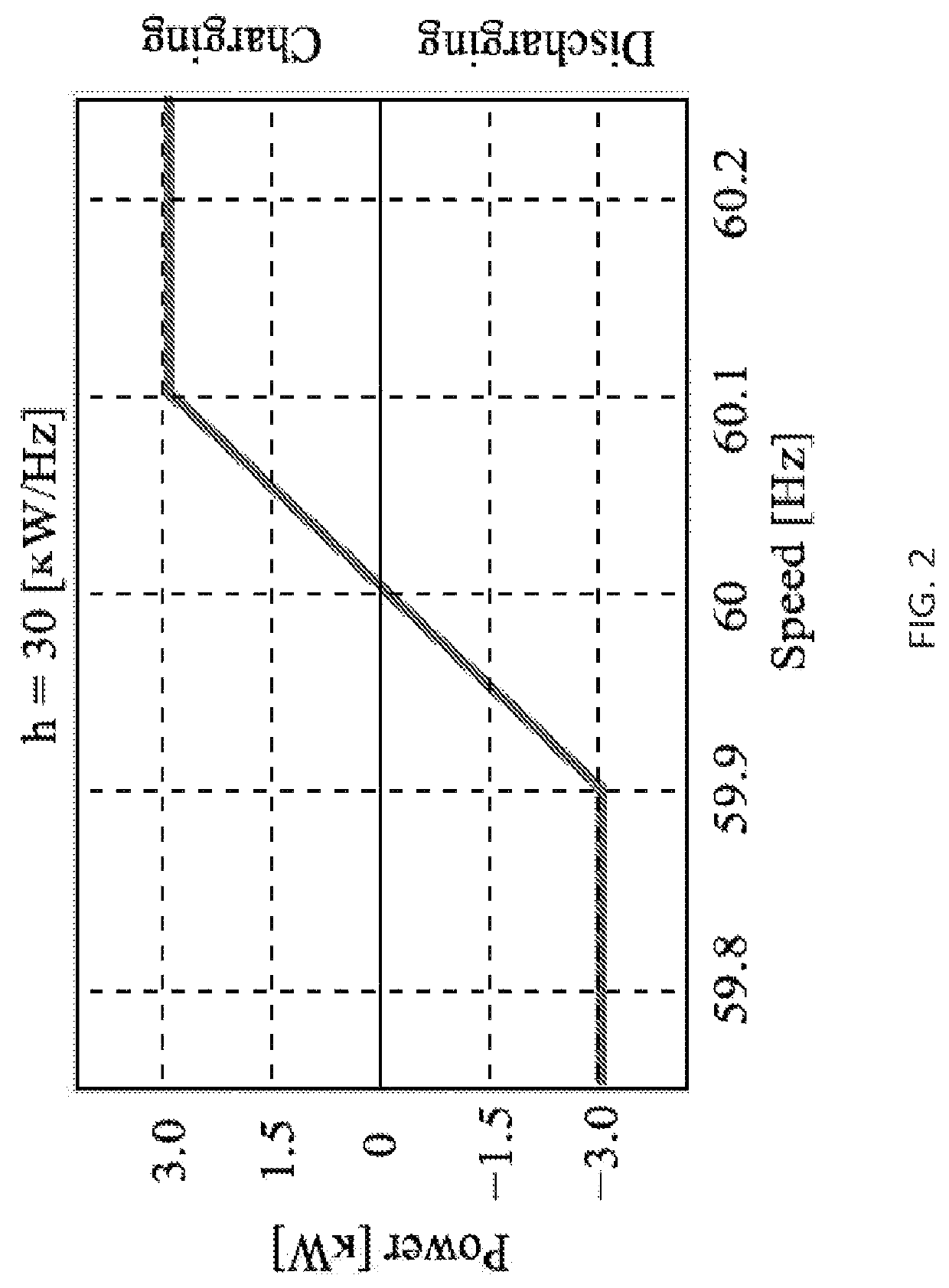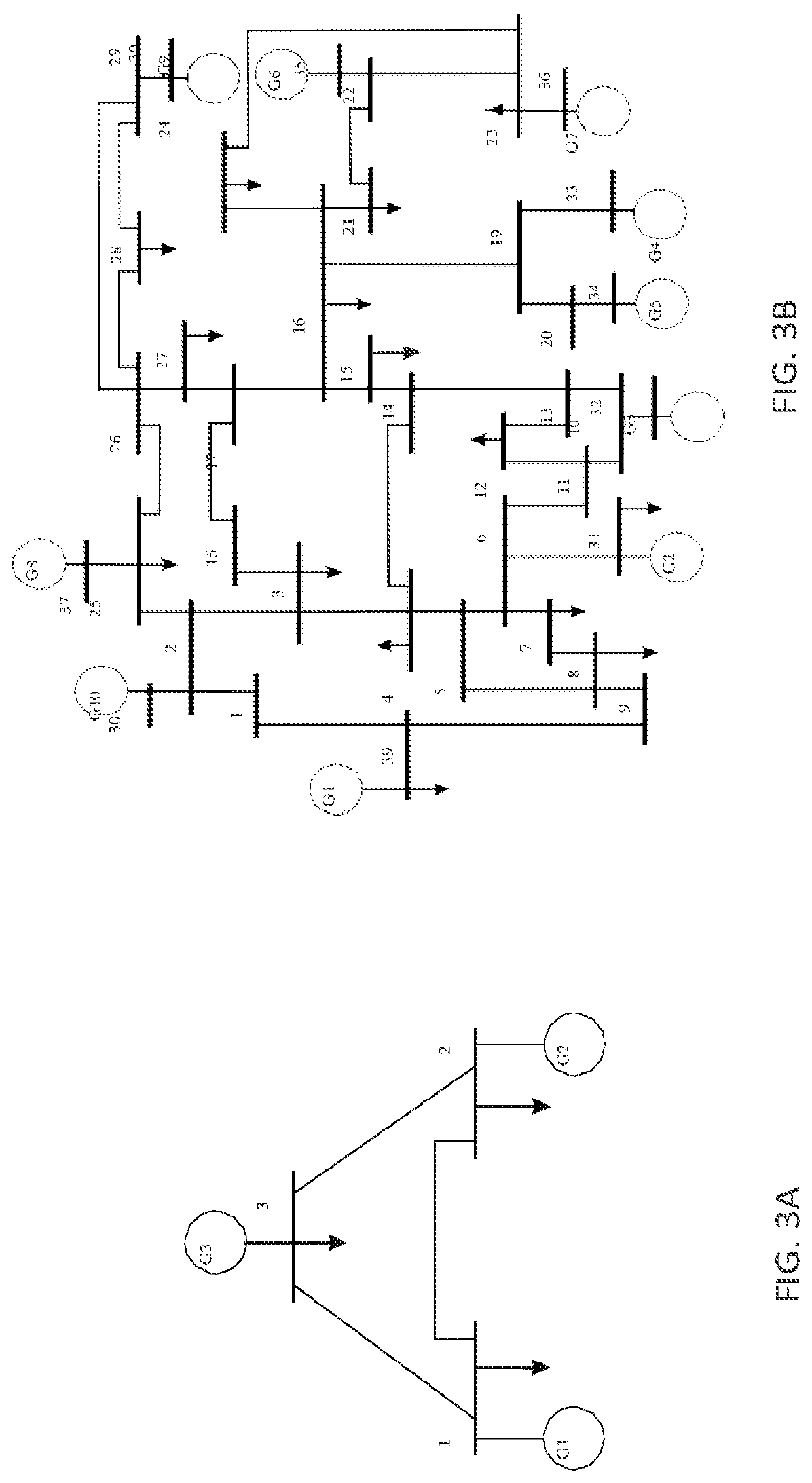Battery control methods and circuits, and energy storage to grid connection systems
a battery control and circuit technology, applied in the direction of batteries/cells, process and machine control, instruments, etc., can solve the problems of increasing the complexity of the power grid, increasing the difficulty of steady-state stability management, and adding yet another layer of security and privacy concerns, so as to improve the stability of the grid
- Summary
- Abstract
- Description
- Claims
- Application Information
AI Technical Summary
Benefits of technology
Problems solved by technology
Method used
Image
Examples
Embodiment Construction
Preferred embodiment methods and systems improve on our prior work discussed in the background of the application. In preferred methods and systems for local battery control of a storage battery, such as PEV battery control, local frequency measurements are made. The measurement provides a control signal that is used to adjust power exchange between individual batteries and the grid. In one embodiment, a simple linear control is implemented to make the battery power output linearly dependent upon frequency deviation. A predetermined ramp limit is set in preferred embodiments. Disturbance can be measured also by local voltage deviations. However, frequency is preferred because voltage is a variable that is associated with reactive (Q) and not real power (P). As such it is not truly indicative of the balance between generation and consumption in the system. While it might provide some benefit, frequency deviation is the preferred measurement to initiate a control change to have a loca...
PUM
 Login to View More
Login to View More Abstract
Description
Claims
Application Information
 Login to View More
Login to View More - R&D
- Intellectual Property
- Life Sciences
- Materials
- Tech Scout
- Unparalleled Data Quality
- Higher Quality Content
- 60% Fewer Hallucinations
Browse by: Latest US Patents, China's latest patents, Technical Efficacy Thesaurus, Application Domain, Technology Topic, Popular Technical Reports.
© 2025 PatSnap. All rights reserved.Legal|Privacy policy|Modern Slavery Act Transparency Statement|Sitemap|About US| Contact US: help@patsnap.com



